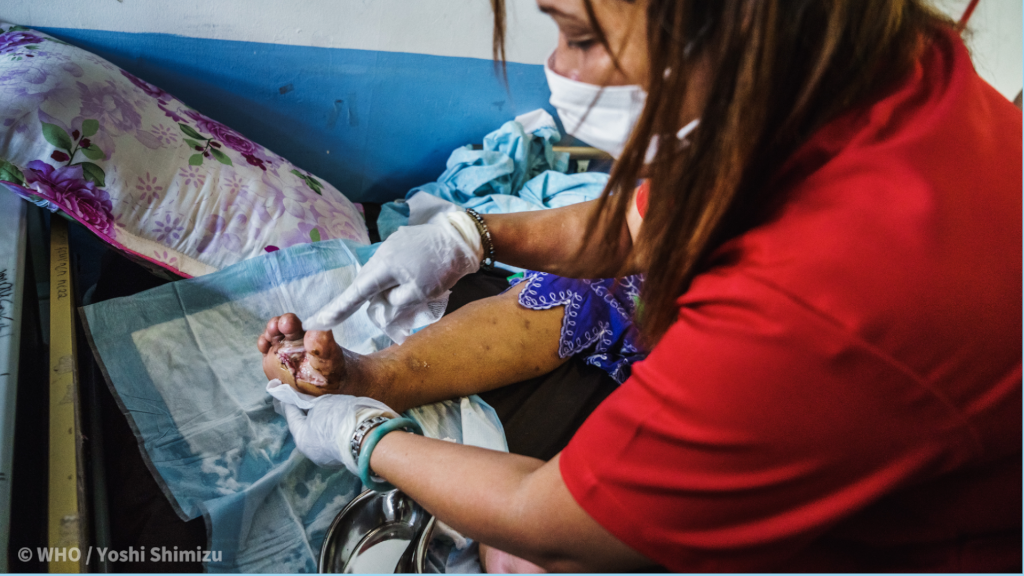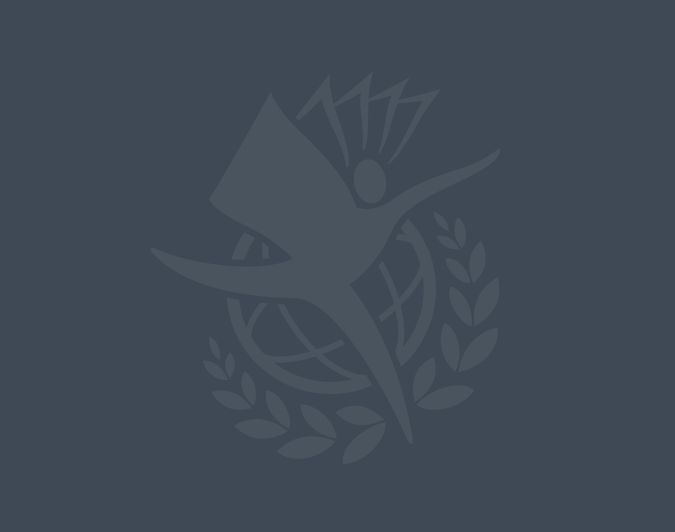
Wound management in resource-limited settings: Training for national and district-level health workers
- Name the most common causes of wounds globally,
- Describe the epidemiology of the common causes of wounds,
- Assess the clinical presentation and diagnosis of wounds,
- Explain the therapeutic management plan for patients with wounds, and
- Identify the socioeconomic and psychological impact of wounds.
Chronic wounds represent a widely neglected problem. Many skin NTDs either present with or can develop into wounds/ulcers. In addition, many common skin conditions, such as diabetic foot and venous ulcers require wound care, providing many opportunities for synergy of resources.
This course addresses the epidemiology, clinical features, diagnosis, treatment and psychological and socioeconomic impacts of wounds for front-line healthcare workers in resource-limited settings.
Approximate course duration: 2 hours
Languages
This course is available in the following languages:
English | Chinese | Arabic
Photo Credits: © WHO / Yoshi Shimizu
Although the epidemiology and high economic burden of chronic wounds is well documented in countries of the Global North, they are poorly studied elsewhere in the world, and their true socioeconomic impact is unknown. Many patients with wounds can be diagnosed and managed at the peripheral health level. Effective treatment, support and information about self-care are needed to appropriately care for affected patients and their families. The aim of the course is to increase familiarity and skills of front-line health workers to manage chronic wounds of various causes in resource-limited settings and to raise awareness of when to refer patients onwards.
Content Warning: This course may contain images, videos, and multimedia materials related to healthcare that may include graphic depictions of medical conditions, surgical procedures, and other clinical content. These materials are intended for educational purposes to enhance understanding of real-world medical scenarios and are essential for the comprehensive learning experience.
Viewer discretion is advised. If you find any content distressing, you may pause or skip the material as needed.
You will receive a Confirmation of Participation upon completing all the modules in this course. Please note that this award does not serve as a professional qualification.
Front-line health workers
Guidance Note
The content of this course has been validated, verified, and is owned by the Neglected Tropical Diseases unit. This course is not a WHO Academy co-produced course. In case of any concerns or feedback on the course content, please share your feedback in the survey form at the end of this course.
Browser and Device Compatibility
For the best experience, we recommend using the latest version of Chrome, Firefox, Safari, or Microsoft Edge to access the courses.
Produced by WHO Neglected Tropical Diseases unit.

